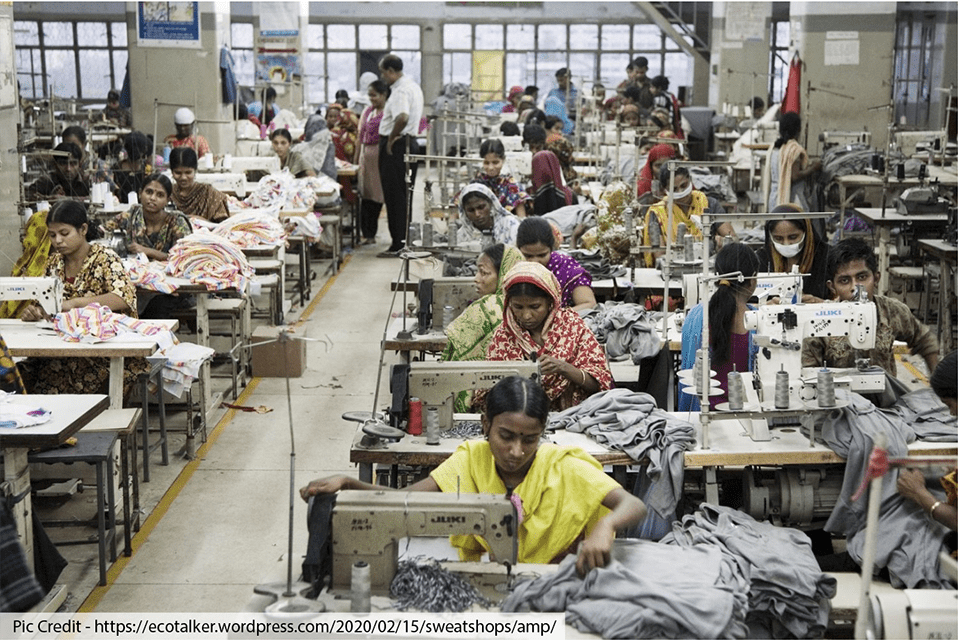In one of my previous articles “Clothing Industry -- Race to the Bottom”, I had mentioned how Sourcing is running to produce the garments at the cheapest possible cost. In this race, sourcing forgets to build relationships and trust with their suppliers.
Having been in the Sourcing business since many years, I have seen cases in which things get missed and perhaps sometimes ignored.
Over the years, I have seen the changing thought process of sourcing. They believe their job is only to source garments at the cheapest cost. A good sourcing manager must remember that for companies competing with high cost, for example, compliant factories, the price offered by small factories for the “same” product, initially seems alluringly seductive, and this can lead to lapses in the diligence required.
For companies, being able to offer the “same” product to customers for “less” while making extremely healthy profits surely is always a tempting business proposition.
The sourcing teams should note that the problem with this model of buying “same” product at 15% less, however, appears to hinge on the adjective “same” and which product characteristics exhibit this sameness with the higher-priced products.
When a company is making serious bank and gobbling up tremendous market share on the back of a laying goose, they are generally disinclined to undertake a deep metallurgical analysis of the golden eggs. Content with the trajectory of their business, executives can drop the ball on managing their suppliers, little realizing that this mistake of sourcing may result in a greater risk to the brand image of the company.
And if that ship sailed, it is time to embark on costly damage control and remediation—both of which tend to be orders of magnitude more expensive than a few Rupees of prevention and monitoring.

We all know that almost everywhere, there are good factories and there are bad ones. These factories may be managed by moral paragons or by the morally bankrupt. But the key to making a successful business sourcing product lies in knowing the difference.
This requires myriad procedures, controls, validations, verifications, and surveillance processes to ensure that your customers are not the ones left to figure out which type of factory you are sourcing your products from.
It is also noticed that most of the sourcing managers and strategists have poor ground-level knowledge of the working characteristics of the suppliers they selected. Most of their technical and quality staff have good university degrees but short-term manufacturing experiences, and little skill in handling difficult suppliers.
The universities are no longer teaching vendor management which is resulting in poor sourcing and purchasing practices. This is one of the root causes for rampant labor abuses in apparel factories, undercutting efforts to hold suppliers accountable for their abusive practices.
Low purchase prices and shorter times for manufacturing products coupled with poor forecasting, unfair penalties, and poor payment terms, exacerbate risks for labor abuses in factories.
Often bad purchasing practices directly undermine efforts brands are making to try to ensure rights-respecting conditions in the factories that produce their garments.
In a quest to prove to the management, sourcing managers squeeze suppliers so hard financially that the suppliers face powerful incentives to cut costs in ways that exacerbate workplace abuses and heighten the brand's exposure to human rights risks.

Sourcing must follow a process that empowers an organization to take appropriate measures for controlling cost, reducing potential risks related to vendors, ensuring excellent service deliverability, and deriving value from vendors in the long run.
This includes researching about the best suitable vendors, sourcing and obtaining pricing information, gauging the quality of work, managing relationships in case of multiple vendors, evaluating performance by setting organizational standards, and ensuring that the payments are always made on time.
Over many years of sourcing products and services, my team and I learned many lessons about how to make this work with low risk and high efficiency. The procedures and controls, and the checks and balances are many and mostly uninteresting to elaborate on here.
So let me just hit the conceptual highlights with a few generalized pearls of hard-earned wisdom.
1. You Do Not Get What You Negotiate, You Get What You Manage
Contracts are all well and good, and of course, they are needed. But the real teeth in most sourcing contracts are in the form of remedies—not prevention. If you want a reliable outcome, you need to actively manage the supplier. Remember no contract ever reversed time and put an already escaped cat back into the bag before it escaped.
2. Ambiguity Is Like Arsenic—It Seems Harmless Enough until You are Forced to Eat It
Yes, some factories intentionally take shortcuts, so you need to avoid them. But a far more frequent source of product problems is ambiguity in the specifications and expectations. Any factory manager worth his salt is constantly looking for ways to reduce costs, and the low-hanging fruit tends to be changes to the materials and processes used in manufacturing. Often, it is not sufficient to have just a product spec that defines the key attributes of the finished goods. Buyers must also consider processing changes that may impact the product in unexpected ways, even if these changes do not technically make the final product out of spec.
3. In God We Trust: Everyone Else Is Required to Bring Data
This is a long topic, which is best addressed fully in every quality assurance (QA) manual. But the most important concept here is that customers and products are not binary, so your product validation should not be either. Do not allow simple yes/no, pass / fail observations on product attributes for your primary quality assurance and acceptance criteria. If something needs to be flat, make sure the factory and an independent third party are measuring and reporting the actual flatness measurement, and not just reporting whether the product passes its flatness specs. This will help in the long run to tweak the product.
4. The Product Is a Reflection of Communications—If Communications Are Not Made Safe, the Product Isn’t Either
I cannot tell you the number of times I have seen sourcing/buyer visit factories and beat the crap out of a supplier over a truly insignificant issue with no understanding of the cultural differences in power between the culture of the people where the factory is located. A basic problem in the junior sourcing team is that they inadvertently train their suppliers to not communicate problems, to not revisit financial terms, to generally not make waves. This is a dangerous approach and one that causes more problems. Suppose, if the price of raw material or transport or insurance unexpectedly goes through the roof, you need your factory to feel safe discussing this with you lest you find your next shipment in need of recall because it was finished cheaply.
5. Guanxi Is Gold—Very Rare and Highly Valuable
Most companies reap what they sow with their key suppliers, so pay close attention to your seeds in low-cost factories offering “same” products. The apparel sourcing business culture is far more relationship-based, and far more dependent upon shared history, shared struggles, and shared successes than is the Western business culture. Personal trust is incredibly important, and the earning of trust and the bestowing of trust drives business. Be fair and consistent with your suppliers. Break some bread and drink some wine together. Always live up to your word and your commitments, and make sure that they understand that you personally expect them to do the same.
Sourcing managers must remember people do not form bonds with companies and they do not get ticked off at companies. People react and respond to people. Consequently, and of paramount importance here, a good supplier does not worry about disappointing a company— he worries about disappointing people.
RELATED TOPICS:#Apparel,Sanjay Lal
Leave a comment
Our email address will not be published. Required fields are marked *







4 Comments
Poonam sood lalJun 18, 2021 at 00:10 am
The question no one answers in sourcing and buying Is it better to have a cheaper garment which is slightly late or is it better to pay rs 10 more and get 100 pct OTIF Which way does the company make More money ??? Once you get your answer to this you will know how to manage your vendors
GunishJun 14, 2021 at 08:19 am
Hi Sanjay, very well written article. I would add that determining the total cost of a sourced garment is also important. i.e. FOB value + the cost of the team that sourced it + the lead time cost. Also - the inventory turn of a garment should be an important metric when calculating the actual cost of a sourced garment.
RanvirJun 12, 2021 at 11:31 am
Very intresting and informative article. I agree with the Author, if u squeeze Supplier too hard and expect the same quality product, then, some where somebody else is paying a price..Like labour working like a prisoner.
Anurag PrasharJun 12, 2021 at 03:55 am
Wow. These are gems of wisdom from a domain expert. Fantastic insights. Time to compile it all in a book.